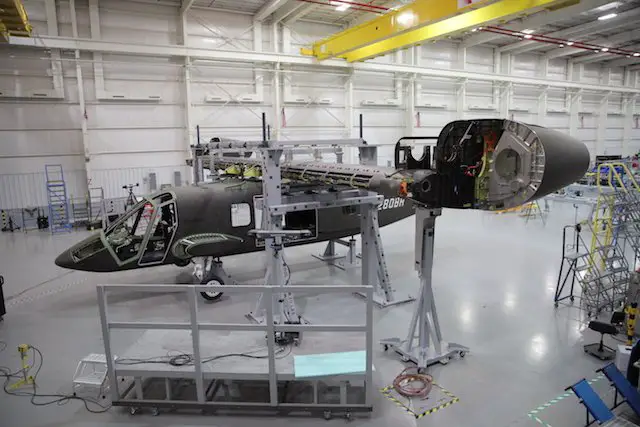Breaking news
Bell V-280 reached nacelles and fuselage assembly milestone.
| a | |||
|
|
|||
|
World Aviation Defense & Security News - Bell Helicopter
|
|||
|
|
|||
|
Bell V-280 reached nacelles and fuselage assembly milestone
|
|||
|
Bell Helicopter has reached a milestone with the successful joining of the V-280 Joint Multi-Role Technology Demonstrator wing and nacelles assembly to the aircraft fuselage. The tiltrotor platform is scheduled to conduct its first flight in September 2017 before succeeding in going into the full scale Engineering, Manufacturing and Development (EMD) phase.
|
|||
|
|
|||
 The V-280 Valor at the assembly line The V-280 Valor at the assembly line(Credit: Bell Helicopter - Textron) |
|||
|
|
|||
|
In the following months until the first half of 2017, the aim is to carry out a tethered power-up test at the Bell Hellicopter facility in Amarillo. Before that, the General Electric T64-GE-419 engines and gearboxes will be installed in the nacelles along with the flight control systems currently under development at the company’s lab in Fort Worth.
The V-280 Valor concept is being developed by Bell Helicopter and Lockheed Martin for the US Army’s Future Vertical Lift programme. It was selected in June 2013, together with Sikorsky-Boeing’s proposal, for the Joint Multi-Role Technology Demonstrator phase, as a scientifically and technically solid proposal. V-280 is a tiltrotor design capitalizing on the more than 300,000 flight hours of the V-22 Osprey and Bell Helicopter’s vast experience in tiltrotor technology. It is being developed to reach speeds of 280 knots, with a combat range between 500 and 800 nm, while carrying 11 to 14 soldiers, also surpassing the capabilities of the MEDEVAC helicopter platforms currently available. Bell Helicopter’s Executive VP of Military Business Development, Lisa Atherton said: “The V-280 tiltrotor is designed with technology advancements that significantly reduce risk and cost, allowing the Department of Defense to field Future Vertical Lift (FVL) to the warfighter far earlier than previously anticipated. We have improved the manufacturing processes to arrive at a revolutionary aircraft with reduced sustainment costs and simplified maintenance procedures. This technology will provide the Department of Defense with the overmatch requirements to win in a complex world.” |
|||
,



















